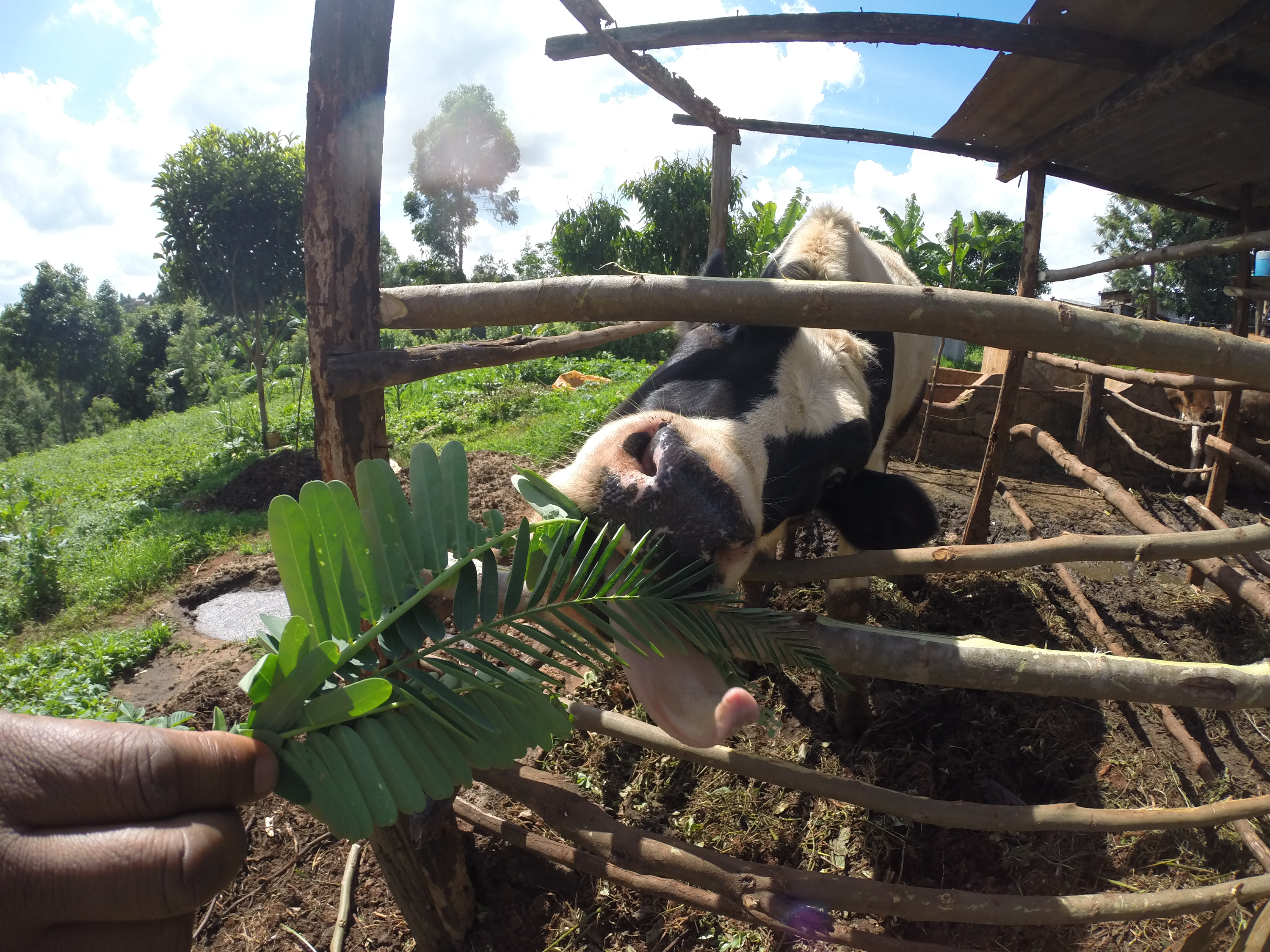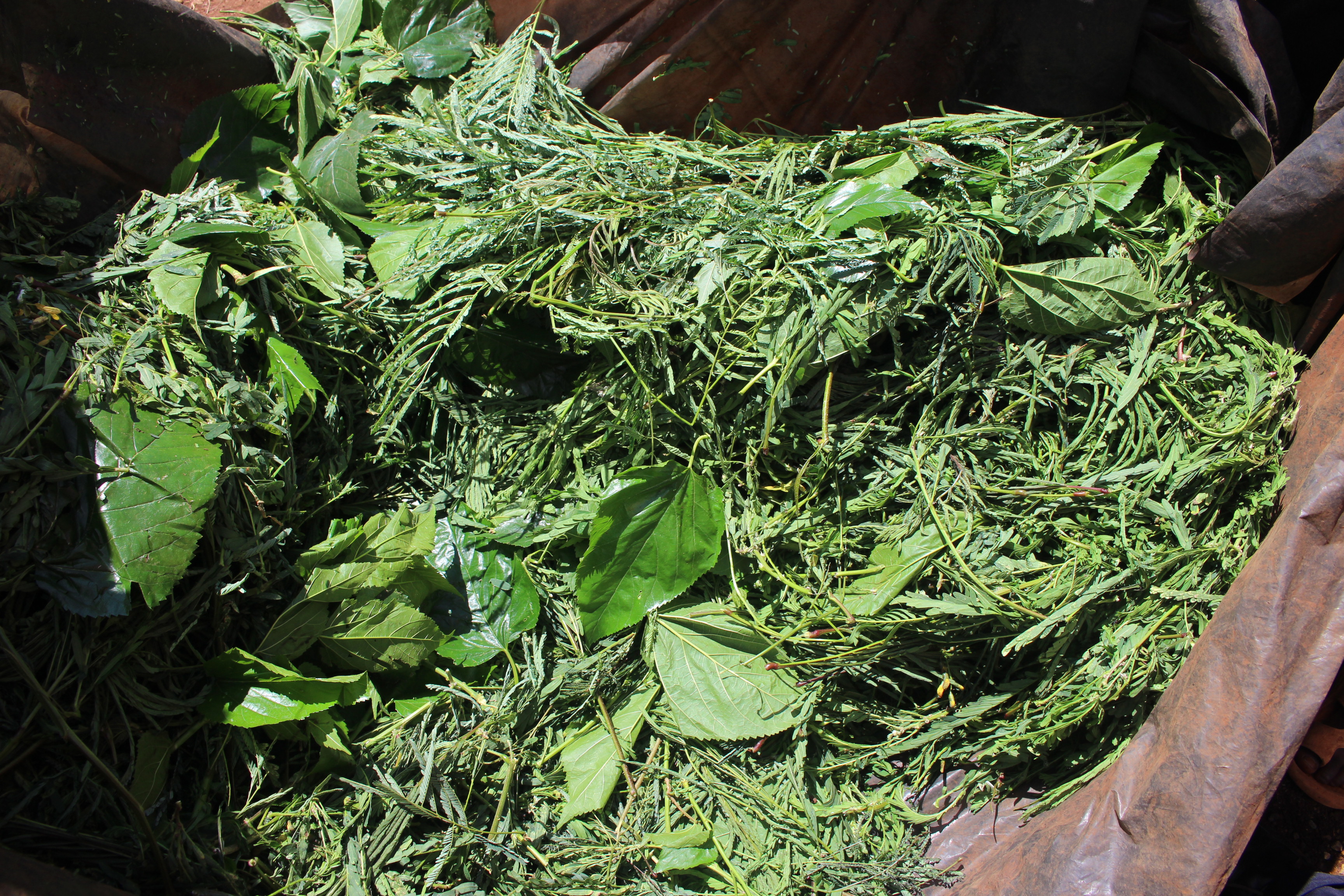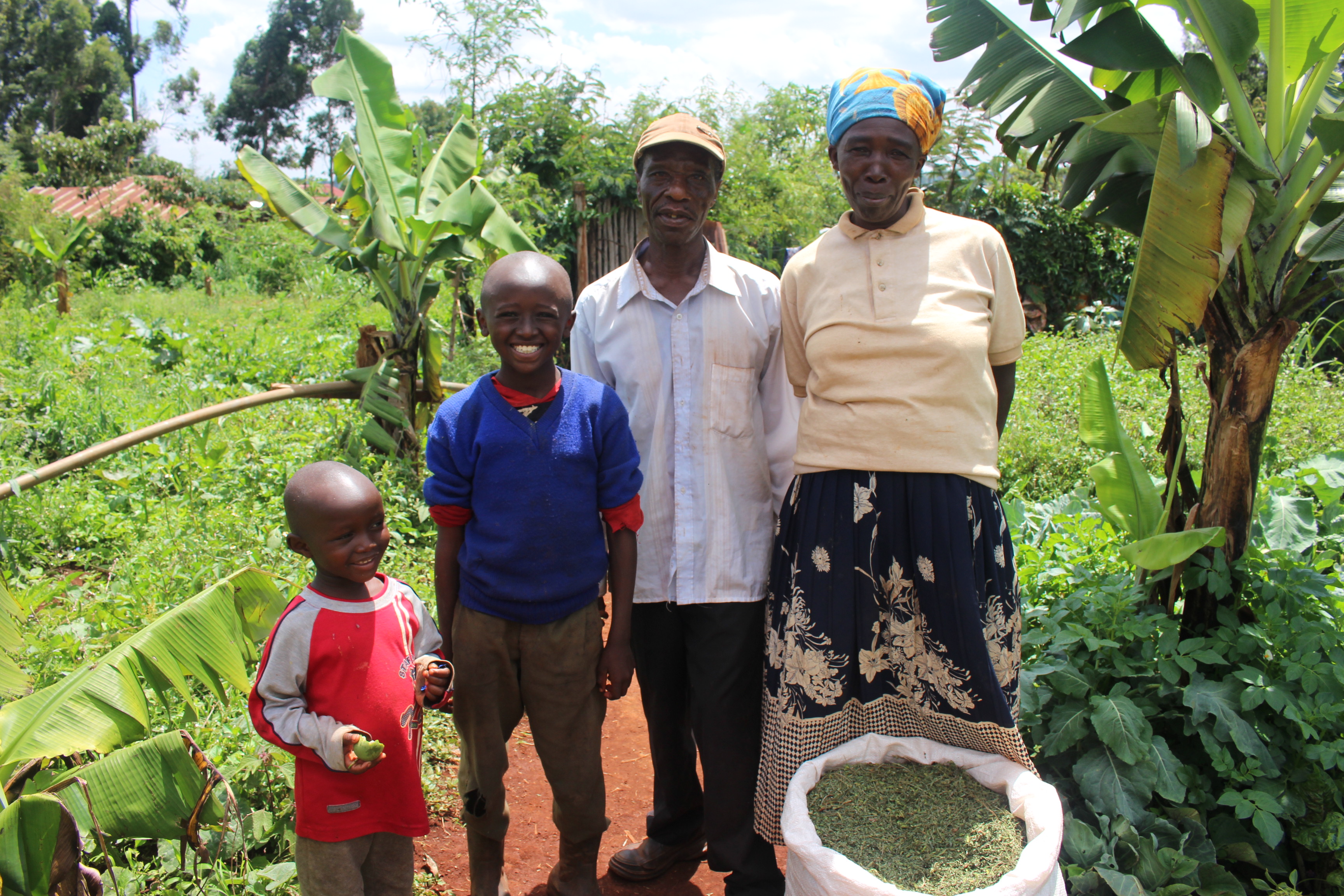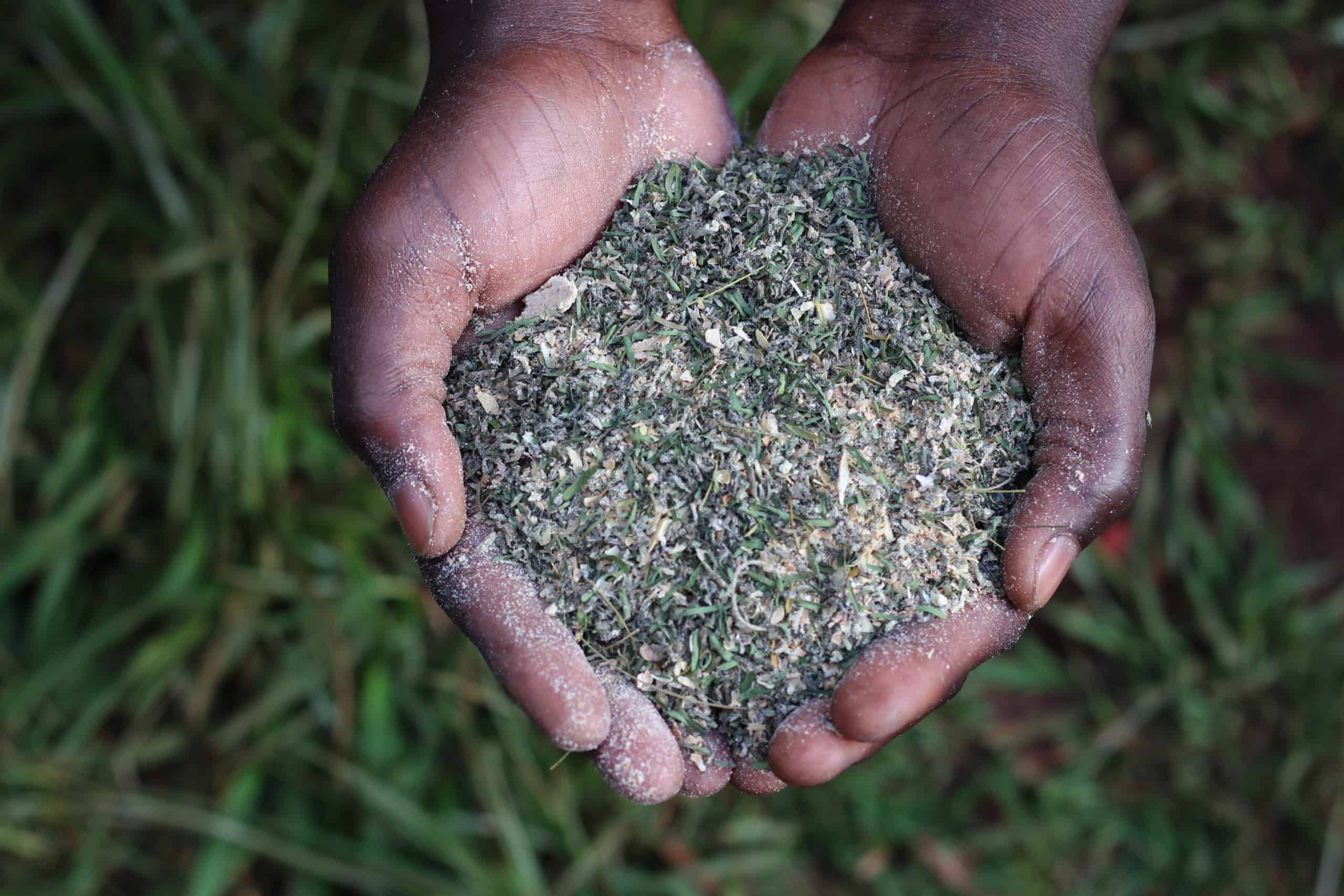
Harvesting and Preparing Fodder Leaves
As the trees grow, farmers trim and prune their leaves. The first pruning typically happens 9–12 months after transplanting from the nursery. Farmers dry the protein-rich green leaves in the sun before milling them into small pieces to mix with feed. This addition benefits cows by improving their health, enhancing milk quality, and helping farmers save on feeding costs.

As a result of fodder tree intake, a cow is healthier, and therefore, more productive. The high-protein leaves increase butterfat content by 10%, leading to better dairy products. A cow fed with fodder trees also yields high-quality meat, increasing the farmer’s profit.

Sustainable and Long-Term Feed Supply
Once fully grown, fodder trees are trimmed 4–6 times a year, providing approximately 1kg of dry feed per tree annually. A farmer with 500 trees has enough feed to sustain one cow year-round. These trees continue providing feed while maintaining their role as natural plot boundaries for many years.

Reducing Aflatoxin Contamination in Dairy Products
Another significant benefit of fodder trees is their role in reducing aflatoxin exposure. These poisonous fungi grow in some agricultural crops and can harm cows and humans. When cows consume contaminated feed, aflatoxins enter their milk, reducing production and causing illness.
In Kenya, liver cancer cases are high due to aflatoxin-contaminated food and milk. Since maize, groundnuts, and dairy products often contain these toxins, diversifying a cow’s diet with fodder trees helps lower the risk.

Measuring the Impact of Fodder Trees
The advantages of the fodder trees are manifold. Many of these benefits are easily quantifiable. Our farmers have seen an increased profit margin between 30-40% annually. The benefit from reducing exposure to aflatoxins is harder to measure, as research is ongoing and under-funded in developing countries. However, the harmful effects of aflatoxins are widely known, and diversifying a cow’s diet is an important step in reducing the exposure of both cows and humans. We are proud of our impact and continued benefit the role of fodder trees play for our farmers – they are a workhorse of the Forest Garden Approach.
